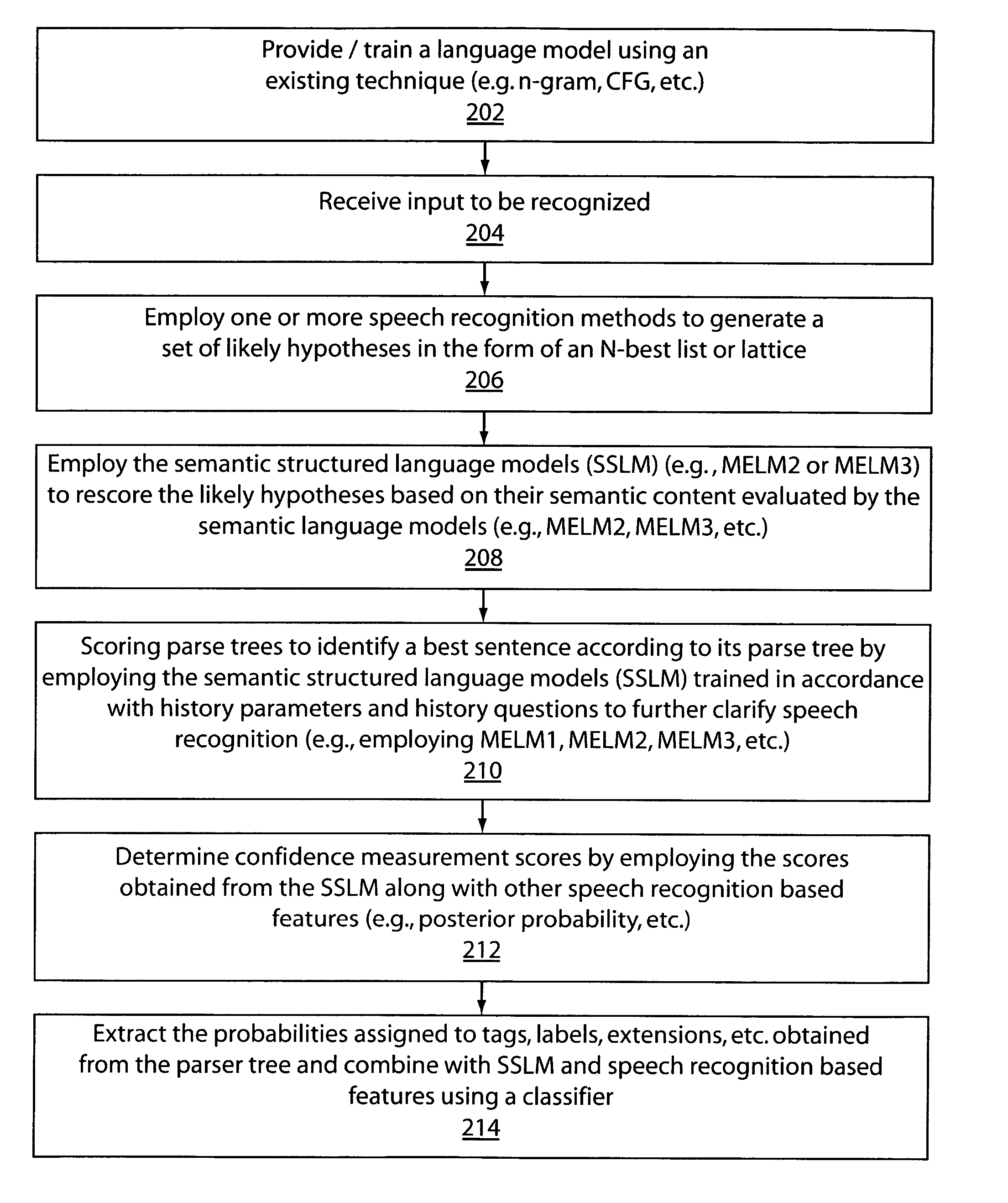Semantic language modeling and confidence measurement
a semantic language and confidence measurement technology, applied in the field of semantic language modeling, can solve problems such as not optimal
- Summary
- Abstract
- Description
- Claims
- Application Information
AI Technical Summary
Benefits of technology
Problems solved by technology
Method used
Image
Examples
Embodiment Construction
Aspects of the invention relate to language modeling, and more particularly to systems and methods which use semantic parse trees for language modeling and confidence measurement.
2. Description of the Related Art
Large vocabulary continuous speech recognition (LVCSR) often employs statistical language modeling techniques to improve recognition performance. Language modeling provides an estimate for the probability of a word sequence (or sentence) P(w1 w2 w3 . . . wN) in a language or a subdomain of a language. A prominent method in statistical language modeling is n-gram language modeling, which is based on estimating the sentence probability by combining probabilities of each word in the context of previous n−1 words.
Although n-gram language models achieve a certain level of performance, they are not optimal. N-grams do not model the long-range dependencies, semantic and syntactic structure of a sentence accurately.
A related problem to modeling semantic information in a sen...
PUM
 Login to View More
Login to View More Abstract
Description
Claims
Application Information
 Login to View More
Login to View More - R&D
- Intellectual Property
- Life Sciences
- Materials
- Tech Scout
- Unparalleled Data Quality
- Higher Quality Content
- 60% Fewer Hallucinations
Browse by: Latest US Patents, China's latest patents, Technical Efficacy Thesaurus, Application Domain, Technology Topic, Popular Technical Reports.
© 2025 PatSnap. All rights reserved.Legal|Privacy policy|Modern Slavery Act Transparency Statement|Sitemap|About US| Contact US: help@patsnap.com



